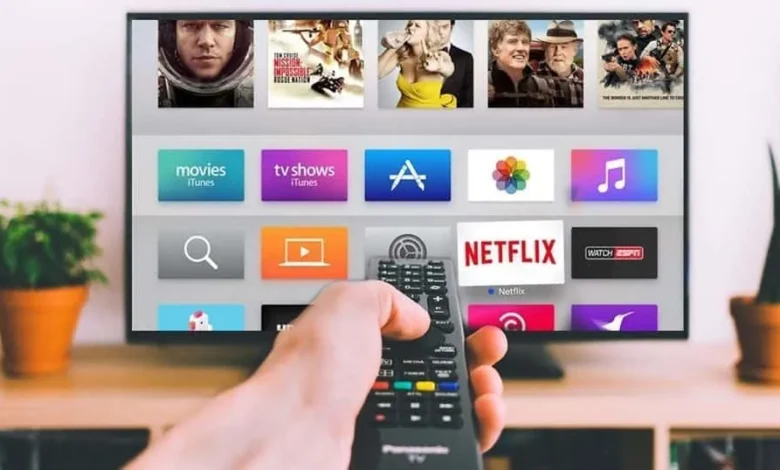Connected TV Advertising: Benefits and Best Practices

The landscape of television consumption has transformed dramatically, with viewers increasingly shifting from traditional cable to streaming platforms accessible through internet-connected devices. Connected TV (CTV) advertising has emerged as a powerful tool for brands to engage with these audiences in a highly targeted, measurable, and impactful way. By leveraging the capabilities of smart TVs, streaming sticks, and gaming consoles, advertisers can deliver personalized messages to viewers in their living rooms, dorm rooms, or wherever they consume content. This article explores the key benefits of CTV advertising and outlines best practices to maximize its effectiveness, offering a strategic perspective for businesses aiming to thrive in this dynamic advertising space.
The Rise of Connected TV
Connected TV refers to any television or device connected to the internet, enabling viewers to stream content through platforms like Netflix, Hulu, Amazon Prime Video, or YouTube TV. Unlike traditional linear TV, which operates on fixed schedules via cable or satellite, CTV delivers on-demand content, offering flexibility and choice to viewers. As of 2024, 87% of U.S. households own at least one CTV device, and ad spending in this channel is projected to exceed $35.2 billion, reflecting its growing dominance. This shift is driven by the rise of cord-cutters—viewers abandoning traditional cable subscriptions—and the proliferation of streaming services catering to diverse tastes.
The appeal of CTV lies in its ability to combine the immersive, large-screen experience of television with the precision and analytics of digital advertising. For advertisers, this creates an opportunity to reach engaged audiences with tailored messages, leveraging data-driven insights to enhance campaign performance. Understanding the unique advantages of CTV advertising is essential for brands looking to capitalize on this trend.
See also: How Technology Is Changing Workplace Communication
Key Advantages of CTV Advertising
CTV advertising offers a range of benefits that set it apart from traditional TV and other digital advertising channels. These advantages stem from its ability to deliver targeted, engaging, and measurable campaigns in a premium viewing environment.
Precision Targeting with Data-Driven Insights
One of the most significant strengths of CTV advertising is its ability to target specific audiences with remarkable accuracy. Unlike linear TV, which relies on broad demographic targeting based on programming, CTV leverages first- and third-party data to segment audiences by interests, behaviors, demographics, and even purchase history. For example, a brand selling outdoor gear can target viewers who frequently watch adventure sports content on YouTube or have recently searched for hiking equipment. This granular approach ensures ads reach viewers most likely to engage, reducing wasted impressions and improving return on investment (ROI).
Enhanced Engagement on Large Screens
CTV ads are typically viewed on large, high-definition screens in relaxed settings, such as living rooms, where viewers are more attentive. This environment fosters higher engagement compared to smaller screens like smartphones or tablets, where distractions are common. The immersive nature of CTV, combined with non-skippable ad formats, results in high video completion rates—often exceeding 95%—making it a compelling medium for storytelling and brand recall.
Cost Efficiency and Flexibility
While CTV advertising can have higher cost-per-mille (CPM) rates—ranging from $35 to $65 compared to $10-$15 for standard video ads—the cost-per-completed-view (CPCV) is often lower due to higher engagement and completion rates. Additionally, CTV offers flexibility through programmatic buying, allowing advertisers to adjust campaigns in real-time based on performance metrics. This contrasts with traditional TV, which requires significant upfront investment and lacks the ability to optimize dynamically.
Reaching Cord-Cutters and Niche Audiences
CTV enables brands to connect with audiences who have moved away from cable, including younger demographics like Gen Z, whose linear TV viewership is declining rapidly. With over 230 million monthly CTV users in the U.S. projected by 2024, advertisers can tap into a growing market of cord-cutters and streaming enthusiasts. Moreover, CTV platforms offer access to niche content, such as specialized sports or hobbyist channels, allowing brands to align with highly specific audience interests.
Measurable Outcomes and Attribution
Unlike traditional TV, where measurement is often limited to estimated audience ratings, CTV provides robust analytics for tracking campaign performance. Metrics like view-through rate (VTR), click-through rate (CTR), video completion rate (VCR), and conversions offer clear insights into ad effectiveness. Advanced attribution models, such as footfall attribution, can even link CTV ad views to in-store visits, providing a direct connection between digital exposure and offline actions. This data-driven approach enables advertisers to refine strategies and maximize ROI.
Strategic Best Practices for CTV Advertising Success
To fully harness the potential of CTV advertising, brands must adopt a strategic approach that aligns with the medium’s unique characteristics. The following best practices provide a roadmap for creating effective and impactful CTV campaigns.
Define Clear Campaign Objectives
Before launching a CTV campaign, establish specific goals, whether it’s brand awareness, leadEUR2⁊ lead generation, or direct sales. Clear objectives guide creative development, targeting strategies, and performance metrics. For instance, a campaign focused on awareness might prioritize reach and impressions, while a lead-generation campaign would emphasize conversions and click-throughs.
Craft High-Quality, Engaging Creatives
CTV ads demand visually compelling content optimized for large screens. Invest in high-definition (HD) or 4K-resolution ads with strong storytelling to capture attention within the first three seconds. Keep ads concise—15 to 30 seconds is ideal—and include clear branding, a compelling value proposition, and a call-to-action (CTA) to drive viewer action. Repurposing existing video ads can be effective, but ensure they are tailored to the CTV format to avoid appearing generic or outdated.
Leverage Advanced Targeting Capabilities
Utilize the full power of CTV’s data-driven targeting to deliver ads to the right audience at the right time. Combine first-party data (e.g., purchase history or website visits) with third-party data (e.g., demographic or behavioral insights) to create detailed viewer profiles. For example, a travel brand could retarget users who recently visited their website with ads showcasing destination-specific offers, increasing relevance and engagement.
Incorporate Interactive Elements
Interactive ad formats, such as QR codes, overlays, or clickable CTAs, can enhance viewer engagement and drive conversions. For instance, a retailer might include a QR code in an ad that directs viewers to a promotional landing page. These elements create a seamless bridge between the ad and the desired action, making the viewing experience more engaging and actionable.
Optimize and Monitor in Real-Time
CTV’s programmatic platforms, such as demand-side platforms (DSPs), enable real-time campaign optimization. Monitor key performance indicators (KPIs) like VCR, CTR, and conversions to identify high-performing ad placements and eliminate underperforming ones. A/B testing different creatives, messages, or audience segments can further refine campaign effectiveness, ensuring resources are allocated to the most impactful strategies.
Ensure Compliance with Data Privacy Regulations
With CTV’s reliance on viewer data for targeting, compliance with data protection regulations, such as GDPR or CCPA, is critical. Use privacy-respecting practices, such as anonymized data or consent-based targeting, to maintain audience trust. Transparent data practices not only safeguard viewer information but also enhance brand credibility in a privacy-conscious market.
Integrate CTV into a Multi-Channel Strategy
CTV should complement, not replace, other advertising channels. Use it to retarget website visitors, extend brand storytelling, or push viewers further down the sales funnel. For example, a bank might use CTV to reinforce a display ad campaign, targeting the same audience with a consistent message across devices. This integrated approach can increase incremental reach and drive conversions, as demonstrated by campaigns achieving over 50% additional reach when combining CTV with other channels.
Navigating Challenges in CTV Advertising
While CTV offers significant advantages, advertisers must address certain challenges to ensure success. The fragmented nature of CTV platforms—spanning Hulu, Amazon Prime, Peacock, and others—can make it difficult to achieve broad reach. To counter this, work with DSPs that offer access to extensive CTV inventory, ensuring ads appear across multiple platforms. Additionally, the higher CPMs of CTV require careful budget allocation. Focus on optimizing for CPCV and VCR to maximize cost efficiency, as these metrics often deliver better outcomes than traditional video ads.
Another challenge is ad fatigue, where repetitive ads can disengage viewers. To mitigate this, rotate multiple creative variations and limit ad frequency to maintain viewer interest. Finally, ensure ads align with the content environment. For example, placing a luxury brand ad during a premium sports event like Thursday Night Football can enhance brand perception, while a mismatched placement might dilute impact.
The Future of Advertising in a Streaming World
As viewer habits continue to shift toward streaming, CTV advertising is poised to dominate the television advertising landscape. Its ability to deliver targeted, engaging, and measurable campaigns makes it a cornerstone of modern marketing strategies. By combining the emotional impact of TV with the precision of digital advertising, CTV enables brands to connect with audiences in meaningful ways, from cord-cutters to niche enthusiasts.
Looking ahead, trends like AI-driven personalization, programmatic buying, and interactive ad formats will further enhance CTV’s effectiveness. AI and machine learning will enable predictive targeting, delivering ads at the precise moment viewers are most receptive. Programmatic platforms will streamline ad buying, offering access to premium inventory without the high costs of traditional TV. Meanwhile, interactive features like shoppable ads will blur the line between entertainment and commerce, creating seamless consumer journeys.
For brands, the opportunity is clear: CTV advertising offers a dynamic, data-driven way to engage audiences in the streaming era. By defining clear objectives, crafting compelling creatives, leveraging advanced targeting, and staying agile with real-time optimization, advertisers can unlock the full potential of CTV. As the industry evolves, those who embrace these best practices will not only reach their audiences but also build lasting connections in an increasingly digital world.




